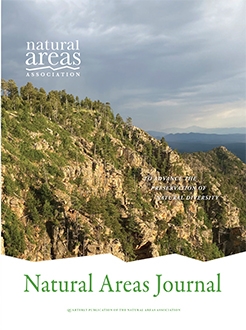Wiregrass, Aristida beyrichiana, is frequently employed for habitat restoration of southeastern pine forests due to its flammability and dominance. We used data from translocations of wiregrass to assess restoration practices and to evaluate plastic responses of survival, growth, and reproduction to translocation into different microhabitats characterized by the relative occurrence of dominant shrub species. Data were collected between 2013 and 2016 and in 2019 and 2020. Target microhabitats included areas near oaks, palms, pines, and in open gaps, randomly selected at two paired elevations on three parallel ridges in the Lake Wales Ridge State Forest, Polk County, central Florida, USA. Height and number of tillers were relevant in explaining vital rate variation across microhabitats. We found a unimodal nonlinear relationship between plant height and number of tillers that varied after translocation to different habitats. Areas near pines and with enough ground cover allowing burning increased plant survival, growth, and production of caryopsides, while locations farther from the ridge crests and in open areas, and near palms and oaks, were less favorable. Plastic phenotypic adjustments between number of tillers and plant height may explain commensurate reproductive outputs of wiregrasses in open habitats and near oaks and palms.
How to translate text using browser tools
26 March 2024
Plastic Demographic Responses of Wiregrass (Aristida beyrichiana) Translocated to Contrasting Habitats
Pedro F. Quintana-Ascencio,
Jennifer Navarra,
Hanna Rosner-Katz,
Candice Knothe
ACCESS THE FULL ARTICLE

Natural Areas Journal
Vol. 44 • No. 2
April 2024
Vol. 44 • No. 2
April 2024
Aristida beyrichiana
Florida sandhill pine-savannas
management
modeling
Wiregrass




